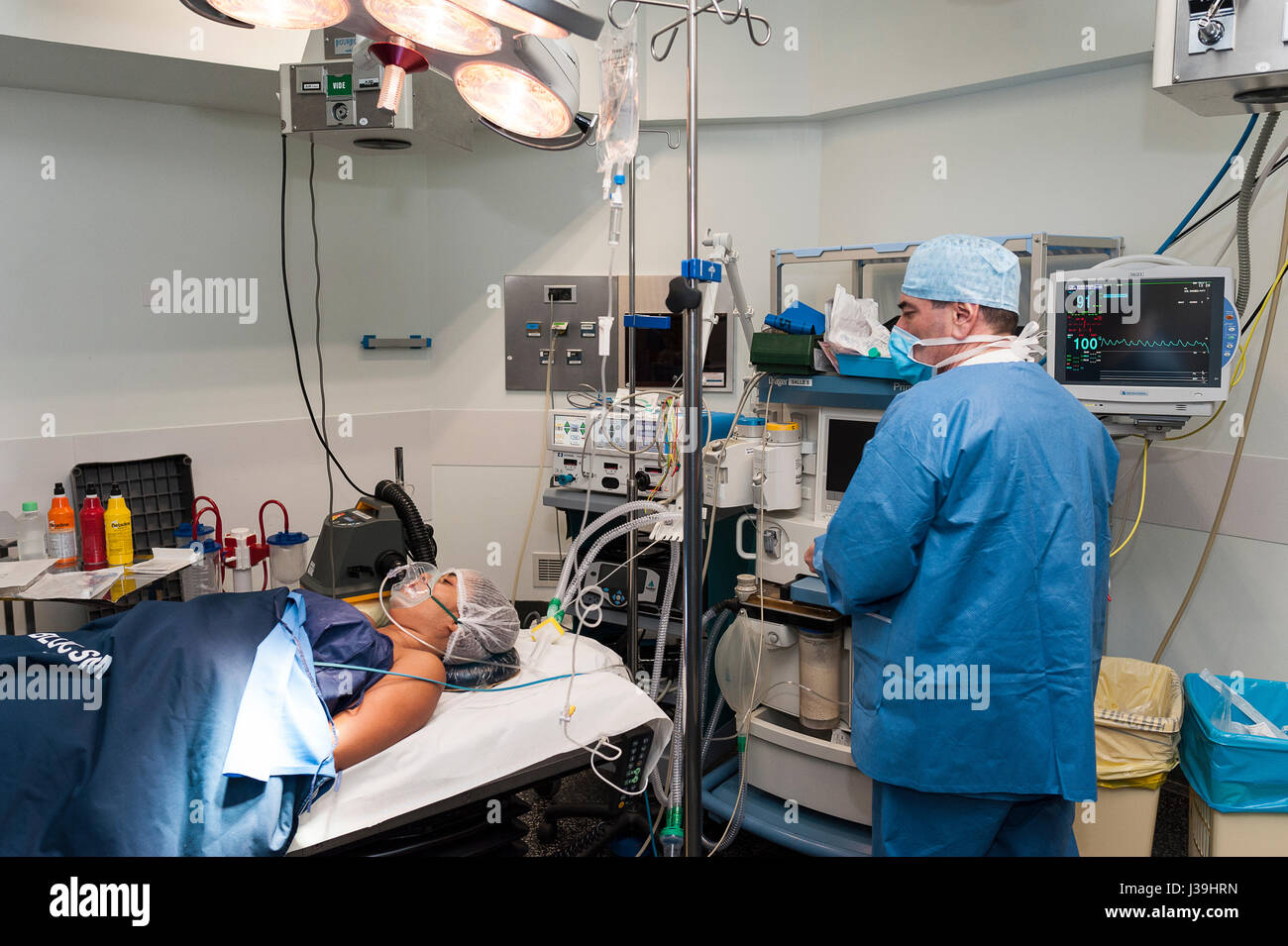What Is Gyno Surgery? It’s a question many women have, and the answer isn’t simple. Gynecological surgery encompasses a wide range of procedures addressing various conditions affecting the female reproductive system. From minimally invasive laparoscopic surgeries to more extensive open procedures, the options are diverse, tailored to individual needs and circumstances. This guide explores the different types of gynecological surgeries, the reasons women might undergo them, and what to expect before, during, and after the procedure.
We’ll delve into specific procedures like hysterectomies, myomectomies, and ovarian cyst removals, explaining the processes involved, potential risks, and recovery timelines. We’ll also discuss the advantages of minimally invasive techniques and the role of robotics in modern gynecological surgery. Ultimately, understanding the options available empowers women to make informed decisions about their healthcare.
What is Gynecological Surgery?
Gynecological surgery encompasses a wide range of procedures addressing various conditions affecting the female reproductive system. This includes the uterus, ovaries, fallopian tubes, vagina, and vulva. These surgeries can be minimally invasive or open, depending on the specific condition and the surgeon’s judgment.
Scope of Gynecological Surgery
Gynecological surgery addresses a broad spectrum of health concerns, from routine procedures like tubal ligations to complex surgeries for conditions like endometriosis or uterine cancer. The procedures range in complexity and invasiveness, tailored to the individual patient’s needs.
Types of Gynecological Procedures
Gynecological procedures are diverse, including hysterectomies (removal of the uterus), oophorectomies (removal of an ovary or ovaries), salpingectomies (removal of fallopian tubes), myomectomies (removal of uterine fibroids), and surgeries to address pelvic organ prolapse or endometriosis. Many procedures can be performed using minimally invasive techniques, such as laparoscopy or robotic surgery.
Reasons for Gynecological Surgery
Women may undergo gynecological surgery for various reasons, including abnormal uterine bleeding, endometriosis, uterine fibroids, ovarian cysts, pelvic organ prolapse, infertility, ectopic pregnancies, and cancerous or precancerous conditions of the reproductive organs. Sometimes, surgery is preventative, such as tubal ligation for birth control.
Minimally Invasive vs. Open Surgical Techniques
| Feature | Minimally Invasive Surgery | Open Surgery | Notes |
|---|---|---|---|
| Incisions | Small incisions (often less than 1cm) | Larger incisions | Smaller incisions lead to less scarring |
| Recovery Time | Shorter recovery time | Longer recovery time | Patients often return to normal activities sooner |
| Hospital Stay | Often shorter or outpatient | Usually requires a hospital stay | Minimally invasive procedures can reduce hospital costs |
| Pain | Generally less postoperative pain | Typically more postoperative pain | Pain management is crucial for both methods |
Types of Gynecological Surgeries: What Is Gyno Surgery
This section details several common gynecological surgical procedures, their steps, potential risks, and recovery processes.
Hysterectomies
Hysterectomies involve the surgical removal of the uterus. There are several types, including total hysterectomy (removal of the uterus and cervix), partial hysterectomy (removal of the uterus, leaving the cervix intact), and radical hysterectomy (removal of the uterus, cervix, and surrounding tissues). The choice of procedure depends on the individual’s condition and medical history.
Laparoscopic Myomectomy
A laparoscopic myomectomy involves the removal of uterine fibroids using small incisions and specialized instruments. The surgeon inserts a laparoscope (a thin, lighted tube with a camera) and surgical instruments through these small incisions to locate and remove the fibroids. The procedure is less invasive than an open myomectomy, resulting in less pain and a faster recovery time.
Ovarian Cyst Removal
Ovarian cysts can be removed through various methods, including laparoscopy, laparotomy (open surgery), or cystectomy (removal of the cyst only). The approach chosen depends on the size and location of the cyst, as well as the patient’s overall health. Larger or complex cysts might require open surgery, while smaller, uncomplicated cysts can often be removed laparoscopically.
Risks and Complications of Gynecological Surgeries
Potential risks and complications associated with gynecological surgeries can include infection, bleeding, blood clots, damage to nearby organs, and adverse reactions to anesthesia. The specific risks vary depending on the type of surgery and the individual’s health.
Tubal Ligation Recovery
- Mild cramping and discomfort for a few days.
- Vaginal bleeding or spotting for up to a week.
- Avoid strenuous activity for several weeks.
- Follow the surgeon’s instructions regarding pain medication and wound care.
- Attend follow-up appointments as scheduled.
Before, During, and After Gynecological Surgery
Proper preparation, understanding the procedure, and diligent post-operative care are crucial for a successful outcome.
Preoperative Preparation
Preoperative preparation involves medical evaluations, blood tests, and discussions with the surgical team. Patients might need to adjust medications, fast before the surgery, and arrange for transportation home.
Surgical Experience (Patient’s Perspective), What Is Gyno Surgery
The experience varies widely depending on the type of surgery and the individual’s response to anesthesia. Generally, patients are asleep during the procedure and will awaken in a recovery room. Post-operative pain management is a key aspect of the patient experience.
Postoperative Care and Recovery
Postoperative care involves wound care, pain management, and following the surgeon’s instructions regarding activity levels and diet. Regular follow-up appointments are essential to monitor healing and address any concerns.
Questions for the Surgeon
Patients should feel comfortable asking their surgeon about the procedure, risks, benefits, recovery time, and alternative treatment options.
Importance of Post-Operative Instructions
Following the surgeon’s post-operative instructions is crucial for minimizing complications and ensuring a smooth recovery. This includes proper wound care, medication adherence, and activity restrictions.
Minimally Invasive Gynecological Surgery
Source: hmsdesk.com
Minimally invasive techniques offer several advantages over traditional open surgery.
Advantages of Minimally Invasive Techniques
Minimally invasive techniques typically result in less pain, smaller incisions, reduced scarring, shorter hospital stays, and faster recovery times compared to open surgery.
Examples of Minimally Invasive Procedures
Laparoscopic hysterectomy, laparoscopic myomectomy, and laparoscopic ovarian cystectomy are examples of minimally invasive procedures.
Discover more by delving into fort collins craigs list further.
Robotics in Gynecological Surgery
Robotic surgery enhances precision and dexterity, allowing surgeons to perform complex procedures through smaller incisions.
Recovery Times
Recovery times are generally shorter for minimally invasive surgeries compared to open surgeries.
Pros and Cons of Minimally Invasive Gynecological Surgery
| Feature | Pros | Cons | Notes |
|---|---|---|---|
| Incisions | Smaller incisions, less scarring | May not be suitable for all cases | Smaller scars improve cosmetic outcome |
| Recovery | Faster recovery, shorter hospital stay | Potential for complications like bowel or bladder injury | Faster recovery improves patient quality of life |
| Pain | Less postoperative pain | Some discomfort may still be present | Pain management strategies are essential |
| Cost | Potentially higher initial cost | Long-term cost savings due to faster recovery | Cost-effectiveness should be evaluated on a case-by-case basis |
Specific Gynecological Conditions and Treatments

Source: alamy.com
This section details surgical treatment options for various gynecological conditions.
Endometriosis
Surgical treatment options for endometriosis include laparoscopy to remove endometrial implants and restore normal anatomy.
Uterine Fibroids
Surgical approaches to uterine fibroids include myomectomy (removal of fibroids) and hysterectomy (removal of the uterus).
Pelvic Organ Prolapse
Surgical management of pelvic organ prolapse involves repairing the supporting structures of the pelvic organs.
Infertility
Surgical solutions for infertility issues include procedures such as tubal repair, ovarian drilling, and myomectomy.
Cervical Cancer
Surgical treatment for cervical cancer may involve hysterectomy, removal of lymph nodes, and other procedures depending on the stage of cancer.
Illustrative Examples

Source: alamy.com
This section provides detailed descriptions of hypothetical cases and surgical aspects.
Laparoscopic Hysterectomy Case Study
A 45-year-old woman with heavy menstrual bleeding underwent a laparoscopic total hysterectomy. The procedure involved several small incisions in the abdomen, through which the surgeon inserted a laparoscope and specialized instruments. The uterus and cervix were removed through one of the incisions. The patient recovered well, with minimal pain and a short hospital stay. Potential complications such as infection or bleeding were carefully monitored and managed.
Surgical Instruments in a Laparoscopic Procedure
Common instruments include a laparoscope, graspers, scissors, dissecting forceps, and energy devices (such as monopolar or bipolar electrosurgical instruments). These instruments are specifically designed for minimally invasive surgery, allowing for precise manipulation of tissues through small incisions.
Anatomy Involved in a Hysterectomy
A hysterectomy involves the removal of the uterus, which is a pear-shaped organ located in the pelvis. The procedure requires careful dissection of the uterine ligaments, blood vessels, and fallopian tubes. The cervix, the lower part of the uterus, is also removed in a total hysterectomy. The surgeon must have a thorough understanding of the pelvic anatomy to perform the procedure safely and effectively.
Closing Summary
Navigating the world of gynecological surgery can feel overwhelming, but understanding the different procedures, potential risks, and recovery processes is crucial for making informed choices. Remember, open communication with your doctor is key. By asking questions, expressing concerns, and actively participating in your healthcare, you can ensure the best possible outcome. This guide provides a foundation for those conversations, empowering you to take control of your health journey.



